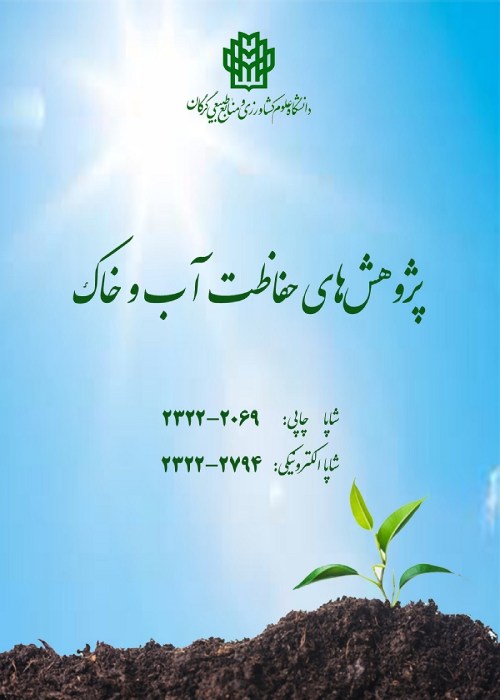Wheat grain yield and soil water content as affected by row spacing and plough directions in a dry-farming land
Author(s):
Article Type:
Research/Original Article (دارای رتبه معتبر)
Abstract:
Background And Objectives
Water retention in the soil and increasing soil water content in the rhizosphere is the first way to enhance crop yield particularly in the dry-farming lands. Agricultural practices along with intrinsic land characteristics (topography, soil, etc.) can affect the water retention in the soil and in consequence crop production. Most of these lands in Iran are located in semi-arid regions and are usually ploughed along the slope which accelerates the water runoff, hence increasing soil erosion. The change of plough direction from slope direction to contour line is the first strategy for water retention in the soil. However, there is no possible for the changing plough direction due some limitations in the farm and restriction on the movement of cultivation machines. The choice of proper row spacing is important in the dry-farming lands ploughed in the slope direction for water conservation as well as crop production. Therefore this study was carried out to investigate the effect of two common row spacing in two plough directions on the water retention and wheat grain yield in a dry-farming land in semi-arid region.Materials And Methods
The study was conducted in a dry-farming land with 10% slope steepness in Zanjan during winter wheat growth period from October 2015 to June 2016. A total of 12 plots (1.5 m × 5 m) were installed to study the effect of two row spacing (20 cm and 25cm) in two plough directions (up to down slope and on the contour line) on the soil water content (SWC) and wheat grain yield (WGY). Soil properties were determined using the common methods in the lab. SWC was determined by a Time- Domain Reflectometry (TDR) interval during the growth period. Seasonal variation of SWC for different treatments were determined during the growth period. WGY for different row spacing and plough directions was related to SWC. Wheat plants were harvested from all plot surfaces to determine WGY early June.Results
Results indicated that both SWC and WGY were significantly affected by plough direction (PConclusion
The study revealed the plough direction in the first order and the row spacing in the second order are the major factor controlling SWC as well as WGY in the dry-farming lands. Application 25 cm row spacing with contour line plough is the best cultivation method for increasing water retention and achieving higher WGY. The importance of these two cultivation methods is obvious in spring when rainfalls are intensive and frequent. Keywords:
Language:
Persian
Published:
Water and Soil Conservation, Volume:24 Issue: 5, 2018
Pages:
211 to 226
magiran.com/p1790321
دانلود و مطالعه متن این مقاله با یکی از روشهای زیر امکان پذیر است:
اشتراک شخصی
با عضویت و پرداخت آنلاین حق اشتراک یکساله به مبلغ 1,390,000ريال میتوانید 70 عنوان مطلب دانلود کنید!
اشتراک سازمانی
به کتابخانه دانشگاه یا محل کار خود پیشنهاد کنید تا اشتراک سازمانی این پایگاه را برای دسترسی نامحدود همه کاربران به متن مطالب تهیه نمایند!
توجه!
- حق عضویت دریافتی صرف حمایت از نشریات عضو و نگهداری، تکمیل و توسعه مگیران میشود.
- پرداخت حق اشتراک و دانلود مقالات اجازه بازنشر آن در سایر رسانههای چاپی و دیجیتال را به کاربر نمیدهد.
In order to view content subscription is required
Personal subscription
Subscribe magiran.com for 70 € euros via PayPal and download 70 articles during a year.
Organization subscription
Please contact us to subscribe your university or library for unlimited access!



